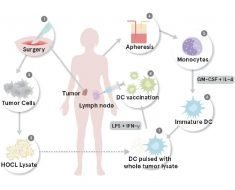
The discovery of the peptide as a possible future antibiotic was made by researchers who screened different antimicrobial peptides’ ability to prevent the growth of Mycobacterium tuberculosis. The peptide they found comes from a fairly common fungus, Pseudoplectania nigrella.
TB patients must often undergo several antibiotic treatments over a long period. Antimicrobial peptides have emerged as interesting alternatives in the hunt for new drugs against this disease. Peptides act as nature’s own antibiotics, as they kill bacteria rapidly and could also act as antibiotics for humans.
Several antimicrobial peptides (AMPs) were previously tested against tuberculosis bacteria without success, as they have either been toxic to human cells or not sufficiently stable.
The major advantage of AMPs is that bacteria find it more difficult to build up a resistance to the peptides, as these have more mechanisms than antibiotics to kill bacteria. Another advantage is that there are AMPs that can reduce inflammation and thus prevent damage to tissue during the treatment.
“When we investigated different peptides, we found one called NZX that is not toxic to human cells, but kills tuberculosis bacteria even at low concentrations. The peptide could also prevent lung damage during tuberculosis infection,” explains the research team manager Gabriela Godaly, senior lecturer at the Department of Laboratory Medicine at Lund University.
The study is mainly based on cell data, i.e. was carried out on human cells in vitro (in a test tube) and later verified in animal models using mice.
“Although it’s a big step from mice to humans, we have great hopes for future patient studies, as the verified results in the animal studies were so clear,” says Gabriela Godaly.
Even treatable cases of TB involve a long and complicated process using several drugs. There may be a need for a two-year-long treatment in the case of resistant tuberculosis bacteria.
“Despite the long treatment period, last year it was possible to save only 54 percent of the patients who had antibiotic-resistant bacteria. So, there is a strong need for alternative treatments to prevent the spread of the disease and to reduce the associated mortality,” says Gabriela Godaly.
If NZX is to fulfill its potential as a future antibiotic, the researchers will have to optimize its properties. They are studying how NZX works against tuberculosis bacteria in combination with current antibiotics (rifampicin, isoniazid, pyrazinamide, ethambutol and streptomycin) in the hope of shortening TB treatment.
“We could show that NZX acts against several clinical strains of tuberculosis bacteria. The therapeutic potential of the peptide is further supported in animal models in which NZX significantly reduced the volume of bacteria after only five days of treatment,” says Gabriela Godaly, and continues:
Source: Read Full Article





